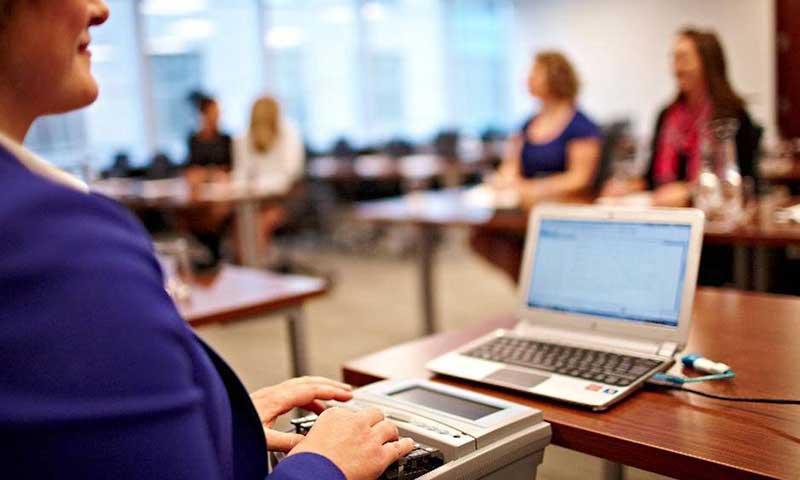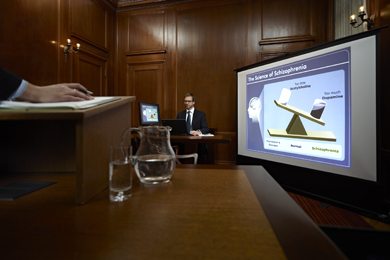Trial Presentation Specialized Assistance for Impactful Legal Arguments
Astound the Court: Crucial Components of a Powerful Test Presentation
Vital components such as comprehending the target market, crafting a compelling story, and grasping spoken and non-verbal interaction are essential parts of an effective discussion. As these variables intertwine, they develop a natural approach that not just informs however additionally engages jurors on several degrees.

Recognizing Your Target Market
Recognizing your target market is a pivotal element of efficient trial presentation. A successful discussion rests on the capability to understand the demographics, values, and tendencies of jurors. This understanding educates exactly how disagreements are mounted, evidence is presented, and sob stories are crafted, making certain that the message reverberates with the jurors on an individual degree.
Research study suggests that jurors come from diverse histories and might have varying levels of recognizing regarding lawful procedures. Furthermore, understanding the jurors' possible prejudices and life experiences enables the trial speaker to expect arguments and address worries proactively.
Effective test discussion also entails observing jurors' reactions during the procedures. Being attuned to non-verbal signs can supply insight into their involvement and receptiveness, allowing for real-time changes in technique. Inevitably, an extensive understanding of the audience not just improves interaction however additionally develops relationship, enhancing the likelihood of a favorable result. Involving with jurors as individuals instead of a collective unit is crucial in promoting a strong connection in the court room.

Crafting a Compelling Story
Crafting a compelling story is necessary in directing jurors via the intricacies of an instance. A well-structured story not just simplifies elaborate lawful ideas however also engages jurors on an emotional degree, making the info a lot more relatable and memorable.
To accomplish this, lawyers must begin by recognizing the core message they desire to communicate. This message should resonate with the jurors' worths and experiences, fostering a link that goes beyond mere realities. The narrative should unfold logically, providing occasions in a clear sequence to prevent complication. This chronological technique can help jurors comply with the progression of occasions, emphasizing cause and impact.
Including human components-- such as personal stories or anecdotes-- can even more improve the story's impact. These elements evoke compassion, permitting jurors to envision the consequences of the situation on realities. Additionally, utilizing a constant motif throughout the discussion enhances the major argument, making it much easier for jurors to preserve crucial points.
Ultimately, a compelling narrative changes a trial presentation from a simple recounting of truths into a convincing tale that astounds the court, urging them to mull over with both factor and feeling.
Making Use Of Aesthetic Help
Including aesthetic help into a trial presentation can significantly boost jurors' understanding and retention of info. Visual materials such as graphes, representations, photos, and videos can transform intricate lawful concepts and proof right into quickly digestible formats. By engaging several senses, these aids enable jurors to imagine the instance's essential elements, making it simpler for them to comply with along and understand intricate information.
Additionally, well-designed aesthetic aids can emphasize essential points and highlight partnerships between various pieces of proof. Timelines can properly illustrate the series of events, while annotated photos can clarify particular details appropriate to the instance. This not only help in understanding but additionally reinforces the story offered by the attorney.
Extremely complex or messy visuals might bewilder jurors and take away from the message. Ultimately, efficient aesthetic communication can be internet an effective device in persuading jurors and assisting them get to educated conclusions.
Mastering Verbal Communication
Reliable spoken communication is critical in a test discussion, as it acts as the main methods through which attorneys communicate their disagreements and link with jurors. Mastering this skill includes clearness, persuasion, and involvement. Lawyers have to express their factors plainly and concisely, avoiding legal lingo that might perplex jurors. Simpleness in language promotes understanding and assists jurors comprehend complicated problems presented during the trial.
In addition, tone and pacing dramatically effect how messages are obtained. A positive tone communicates authority, while appropriate pacing allows jurors to absorb info without feeling bewildered. Attorneys should additionally vary their vocal inflections to stress crucial points and keep jurors' rate of interest throughout the presentation.
In addition, the organization of spoken disagreements is vital. Structuring the narrative realistically and coherently aids jurors comply with the attorney's line of thinking, making it simpler for them to preserve important information. Making use of convincing strategies, such as storytelling, can additionally improve the psychological resonance of the debates provided, therefore producing an extra profound link with jurors.
Eventually, understanding verbal interaction not only enhances an attorney's situation but additionally fosters count on and relationship with the jury, significantly improving the opportunities of a beneficial judgment.

Involving With Body Language
Nonverbal communication plays an essential function in trial discussions, typically communicating messages that words alone can not express. Body movement, including motions, pose, faces, and eye call, substantially influences just how jurors perceive the credibility and sincerity of the speaker. A positive stance, with shoulders back and an open posture, can infuse count on, while closed-off body movement may recommend defensiveness or unpredictability.

Face expressions ought to reflect the feelings connected with the case, strengthening the narrative being provided. As an like this example, a sincere expression throughout a poignant minute can generate compassion and enhance the psychological appeal. Eventually, grasping body movement is necessary for reliable test discussions, as it boosts verbal interaction and develops an engaging presence that reverberates with the court.
Final Thought
Finally, astounding the court necessitates a calculated strategy that encompasses recognizing the target market, crafting a compelling narrative, using aesthetic help, mastering verbal communication, and engaging with body movement. Each component plays a vital duty in developing a powerful trial presentation that resonates with jurors on both emotional and intellectual levels (trial presentation). By integrating these important source elements properly, lawyers can significantly enhance their capability to convince and influence jury decision-making